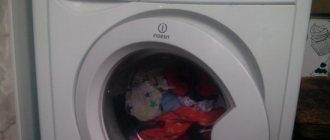Those who have a garage are very familiar with the situation of condensation in the room. High humidity negatively affects not only the condition of building structures, but also contributes to the fact that the car body begins to rust. In addition, harmful fumes are released that have a negative impact on health.
But how to remove dampness from the garage, what methods are used for this? The most commonly used ventilation devices and floor waterproofing. But it is impossible to say which method is the most effective; it all depends on the conditions and reasons for the appearance of dampness. If the floor in the garage is earthen, moisture can form from under the floor, that is, it is necessary to carry out concreting and waterproofing work on its surface.
Lack of ventilation can also be caused by clogged air vents.
Often, car owners themselves board up such holes, which leads to increased humidity levels.
How to reduce humidity in the garage?
What are your options for reducing moisture in a brick garage with a concrete deck?
There is some kind of ventilation (4 holes near the floor, two in front and back). I propose to scatter expanded clay into the hole (it is covered with a sheet of plywood), what other structures exist. materials for such purposes?
In this case, the use of hygroscopic materials is useless, since they all have their own saturation threshold and will have to be changed very regularly. The best option in this case is indeed to provide proper ventilation (simple holes in the walls do not provide it).
Conventional (natural) ventilation
assumes an inlet - just above the floor and an exhaust - at the greatest and equidistant distance from the inlets, exiting through the roof. The cross-section of the exhaust opening should be 2-3 times smaller than the total supply opening to ensure normal draft. If the draft is insufficient, it can be increased by installing an exhaust fan on the hood.
As far as I understand from the question, there is no basement in the garage, otherwise a more complex ventilation scheme is needed.
Make a good hood there. Constant ventilation
I bought a garage two years ago. The old owner did not say anything about the microclimate in the garage, but almost immediately ran into the problem of dampness in it. The garage had a pit and a basement. From ventilation: two holes in the upper part of the front wall on the sides of the gate, one an exhaust pipe in the rear of the garage with a pipe opening a meter from the roof and an exhaust pipe in the basement with a pipe opening 50 cm from the basement roof. I punched two more holes in the lower part of the front wall, on the sides of the gate, and installed another exhaust pipe in the rear part of the garage in the opposite corner from the pipe already installed with a hole 1 meter from the floor and another exhaust pipe in the basement, in the opposite corner from the pipe already installed with a hole 50 cm from the floor. Everything. Dry. Of course not like in an advanced elevator collective farm in Soviet times)))), but it’ll do!
High humidity in the garage
What should the humidity be in the garage? The room where the car is parked and repaired must be dry. Therefore, it is recommended that the relative humidity be no more than 60%. If this norm is violated in the garage, unpleasant consequences arise:
- car body corrosion;
- damage to tools and equipment;
- rotting of wooden parts of the premises and property;
- the appearance of condensation and mold.
Accordingly, such a common phenomenon as rust on the body is explained by high humidity and improper ventilation of the room. Proper ventilation helps both reduce the level of humidity in the garage and provide the room with fresh air and the oxygen a person needs.
How to remove moisture in the garage
If natural ventilation is not enough to reduce the humidity in the garage, then it is recommended to organize forced ventilation. Artificial ventilation is equipped with fans, filters and control devices. Electricity is required to keep the system running. If the normal level of humidity in the garage is ensured, it means that the ventilation is working correctly and efficiently.
Use of additional waterproofing of floors and walls
If the reason for the appearance of dampness lies in the proximity of groundwater, then in addition to drying, additional waterproofing is necessary.
Here they use a “clay castle”:
The floor in the premises is covered with a layer of clay and compacted:
- Pour a layer of sand.
- Concrete screed is poured.
How to prevent water from entering through cracks in the floor?
Serious waterproofing of the floor can also be done in this way:
- a layer of crushed stone is poured onto the floor,
- filled with bitumen
- lay a material with waterproofing properties,
- poured with concrete (sometimes expanded clay is mixed into it).
You can carry out additional waterproofing of the walls. To do this, the walls on the inside of the room are covered with insulating material or covered with bitumen.
How to reduce humidity in a garage effectively and inexpensively
So, you know what the humidity should be, and you know the negative consequences that occur if there is excess moisture in the room where the car is parked. But to eliminate the problem without resorting to the implementation of complex and expensive electric forced ventilation? You can reduce the level of air humidity in a garage using solar rather than electric dehumidification. The foreign and Russian markets offer devices powered by solar energy. There is no need to incur operating costs, since the sun's rays are publicly available and free in any region all year round. These safe devices will help you regulate the humidity in your garage, and you will only have to pay once - upon purchase and installation.
Modern technology is an effective alternative to natural resources
This method provides good results, but the devices must be used wisely. Thus, in the process of drying walls with an electric dryer, excess moisture loss in certain areas should be prevented. If the walls are already covered with plaster, it is better to put the device aside: sudden removal of moisture will lead to the appearance of cracks on the surface of the wall. In this case, preference should be given to natural drying.
Similar methods of drying a wooden house include an infrared heater and the electroosmosis method. In the latter case, it is better to use the services of a professional.
Eliminating the problem of high air humidity in the garage
The garage is not a residential premises, so some deviations from the standards and assumptions are allowed there. However, the air humidity in the garage must always be maintained. If the level is so high that condensation forms on the walls or gates, this is a sign that the problem urgently needs to be addressed. But even if there is no dew inside the garage, it is recommended to check the internal systems to ensure that you are properly protected from dampness.
Dampness in the garage is a bad sign and indicates design flaws. Unfortunately, many car enthusiasts are faced with this problem, but are in no hurry to solve it. Therefore, it is worth knowing that high humidity in the garage is not only a slight discomfort when staying indoors.
Dampness slowly but surely worsens the condition of the room. Despite the fact that high-quality materials are used during construction, they are subject to corrosion. High humidity in the garage accelerates the deterioration of concrete walls, not to mention wooden beams or partitions, if they were used. Mold and mildew appear on the walls, which literally destroy all materials from the inside.
The corrosion of what is in it also depends on what humidity should be in the garage and actually is. This also applies to vehicles. Even with proper care, the risk of rust or some kind of problem with the automatic system increases significantly. For humans, dampness, which no one has fought against for a long time, is harmful even if they stay indoors for not too long. Fumes from motor oil and other substances that are needed to keep the car running, as well as the release of mold and mildew, make the air in the garage toxic, so a person can become ill even after a short stay in the room.
The humidity level is determined by the temperature in the room, as well as air exchange. For example, in winter the recommended temperature is +5 degrees and below. Air movement depends on the volume of the garage and the number of cars, but for most it can be specified as 180 m3/h.
High humidity in the garage is associated with several aspects:
- Lack or poor ventilation;
- An earthen floor or basement as a conductor of moisture;
- Incorrect thermal insulation or increased heating.
These reasons are the main reasons why the problem occurs, however, dampness can be caused by a metal door or a large amount of water inside the garage itself. Depending on the cause, the ways to fix the problem will differ.
Dehumidifying air using improvised methods
If the air in the garage is damp, and purchasing a dehumidifier is not yet possible, then the following methods can be used as a temporary solution:
- silica gel balls poured into containers and placed in different places in the garage. Some craftsmen pour them into a bottle, and to make the air circulate better, attach a small fan. Silica gel can be dried and reused;
- white moss in powder form, placed in containers around the room, work in the same way as silica gel. It actively absorbs moisture;
- Calcium hydroxide has good absorbing properties;
- Another option is clay brick. It is heated well in the oven and placed in the garage. As the brick cools, it absorbs moisture. For high-quality drainage, you will need several of these bricks, and you must work carefully so as not to get burned;
- some advise using hydrochloric and sulfuric acids, but the possible risk of burns and poisoning is higher than the likely benefits of the methods, so they should not even be considered.
You can check the effectiveness of such improvised dehumidifiers using a hygrometer. The simplest devices cost a penny, but they measure the humidity level quite accurately.
When using these homemade dehumidifiers, remember that a device specifically designed for dehumidification will always work much more efficiently, especially if it is chosen correctly.
Tags:Garage
Remedies
Dampness in the garage can appear for various reasons, but usually they are associated with shortcomings in the room itself. In most cases, eliminating the causes of moisture is quite easy, and with the right solution, this problem will no longer bother the car owner. However, there are construction disadvantages associated with the choice of location. In this case, no modifications can correct the microclimate.
Ventilation
Most car enthusiasts maintain normal humidity using natural ventilation. It does not require energy consumption or major modifications. To do this, you need to make 2 holes: one at the bottom near the floor, and the second at the ceiling. The lower pipe will be a supply pipe, as it is responsible for air intake from the street. Outside the garage, the pipe should be located towards the ground at a height of at least 20 cm. The top hole with the air exhaust pipe should go to the roof. The longer the pipe, the better the draft and the better air outlet. A good option would be to protect the outlet with a roof. This slightly increases traction in winter, as it prevents snow from entering.
An alternative would be to install electrically powered fans. They are also installed one near the floor, the second under the ceiling. The inconvenience of this method is that it is necessary to control the operation of such hoods and independently determine the time for their operation.
Some car enthusiasts combine both of these methods, but in winter the use of electric hoods leads to hypothermia of the room. However, the method has no other disadvantages, so if there is natural ventilation, installing additional ventilation will not be a problem.
Waterproofing
Water enters the garage from below due to problems with laying the foundation, the presence of an earthen floor, inspection pit or basement. Most often, car enthusiasts radically solve this problem and use concrete to combat moisture. They fill the entire basement and floor with it. This method is not suitable for everyone, so you can simply find places where the foundation is not airtight and cover it with bitumen mastic.
It would be wrong to simply fill an earthen floor with concrete, since it will quickly become covered with cracks and will not solve the problem of high humidity. It is necessary to fill the floor with river sand, which absorbs some of the moisture. It is advisable to alternate layers of sand with expanded clay, and cover everything tightly with wooden boards on top.
Thermal insulation
Often condensation in the garage appears due to the difference in temperatures inside and outside. This indicates that the room has poor thermal insulation. In this case, the problem can be eliminated by carefully treating the room with special insulation. They need to be used around the entire perimeter: on the ceiling, walls. Don't forget that metal doors also need thermal insulation. To do this, they can be painted on the outside with a special compound and anti-corrosion agent, and insulated on the inside with wooden boards tightly fitted to each other.
Thermal insulation without flaws will help reduce humidity and make the microclimate in the garage dry, the room will heat up faster and cool down more slowly. Periodic heating of the garage in winter is not a mandatory measure, but it will also help keep the garage dry with proper natural exhaust. The heater should only operate under the supervision of the garage owner. You cannot leave it turned on, as malfunctions can lead to a fire. You can reduce humidity using additional heating only in winter.
other methods
Optimal humidity in a garage that is well insulated and ventilated is achieved by avoiding the entry of water along with the car:
- Wipe your car thoroughly from snow and water in bad weather;
- Let the vehicle cool down with the garage doors open;
- Do not wash your car indoors.
Some stores sell special devices to combat high humidity - moisture absorber tablets. They are devices with a plastic container where water accumulates and a top part with a grill. The plastic container is removable, as water needs to be poured out of it periodically. They are not suitable as a radical means of getting rid of moisture in a garage, but it would be nice to use them in damp conditions that occur infrequently. For example, after rain or if the car has not been sufficiently cleared of snow.
Advice from experts
These are the points that specialists, car enthusiasts and garage workers with extensive experience pay attention to first.
- The main reason for excessive dampness in a garage is poor ventilation. Even if moisture does get inside, with a good ventilation system you can avoid serious consequences. The moisture will simply evaporate. But if a person decides to close the ventilation holes, the formation of condensation in large quantities is inevitable, even with normal waterproofing. The air will become humid, which is very harmful for the car, metal, and the entire garage.
- When a viewing hole or cellar is installed in the garage, moisture can be sucked in from the floor. Also, sometimes the problem arises due to a violation of the foundation construction technology. If you do not immediately take care of high-quality waterproofing, then difficulties will definitely begin.
- An interesting solution is to install an air conditioner in the garage. You can simply put it in dry mode. In this case, the floors in the cellar, the inspection pit and the garage itself, and the walls of the room must be carefully concreted.
- The ventilation system will also protect against dampness in the garage. Choose which type of ventilation suits you best: forced, combined or natural. Just be sure to follow the installation technology, otherwise your ventilation system will not work effectively.
- Please note: when there is a heating system in the garage, you must use a special split system that has an air dehumidification program.
- Another risk factor that provokes the formation of condensation is associated with the moment the car is sent to the garage. Humidity enters the garage with the car. Condensation can also form due to temperature differences. It is advisable to pay attention to this. Get into the habit of preparing your car for entry into the garage first. You need to turn off the engine, let it cool, open the doors.
Also, all experienced car enthusiasts note: it is necessary to start combating dampness in the garage immediately. Condensation should not be allowed to form as this is associated with serious risk factors. The car must be kept safe in the garage, it is important to prevent the formation of toxic compounds in the air, problems with wiring and much more.











